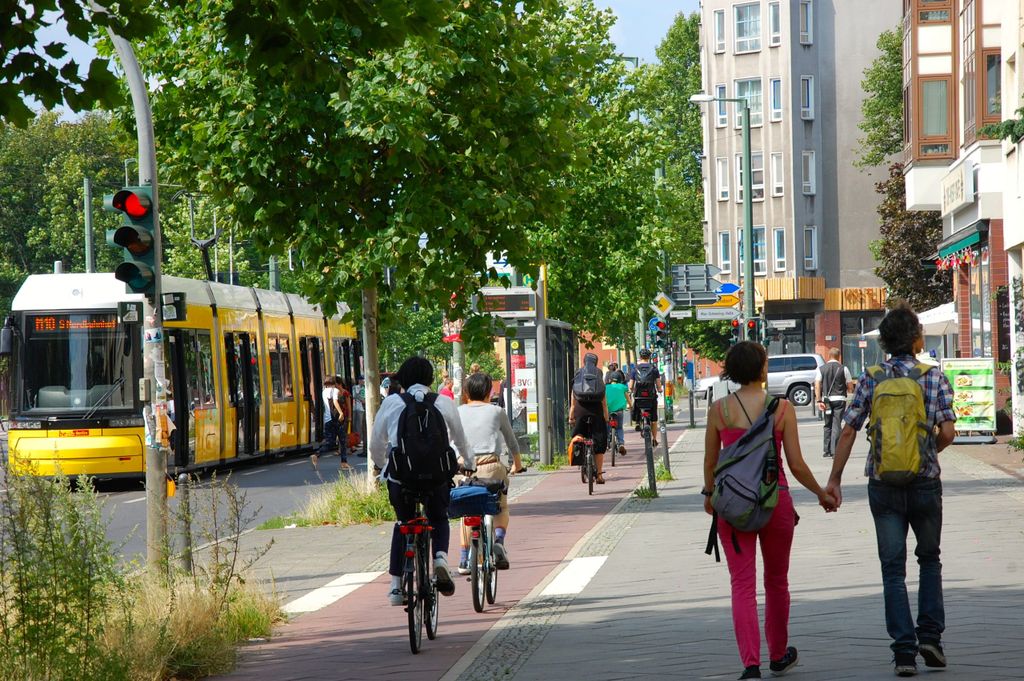
What is the future of shared mobility? 7 trends set to shape the market
The challenges & opportunities
Shared mobility is uniquely placed to tackle today’s challenges in transport. But what about tomorrow’s challenges?
In 2021, nearly 80% of journeys across the EU were made in a private car. But when asked about the future of mobility, people imagine themselves travelling less by car, and more with shared mobility companies and new forms of transport like shared autonomous vehicles. Everything is set to change, with shifts in passenger behaviour, as well as other shared mobility trends like increased investment and the building of new infrastructure.
The shared mobility market is dynamic and innovative. While that makes it hard to predict what will happen in the coming years, UITP has identified seven of the most important shared mobility trends that authorities and operators should expect. They fit into two categories: Innovation and Regulation.
#1 Automation
Automation can make maintenance and operations easier and more cost-effective. Though perhaps the biggest effect of automation will be the introduction of shared autonomous vehicles. Currently, 90% of all spending in the shared mobility market is spent on ridehailing services, which are a magnet for automation. If it becomes easier, more convenient, and more affordable to be driven around – by a person or a machine – people will ditch their private cars and ride on-demand services.
Right now, authorities and operators are deploying shared autonomous vehicles across the world, preparing for an eventual wider roll-out. This includes UITP-led projects such as ULTIMO and SHOW, which are putting shared autonomous vehicles to good use on city streets.
#2 Consolidation
The shared mobility market is maturing. Start-ups are moving from battling for market share with VC funding, to buying each other out and building a sustainable business model. Where this goes, and who emerges on top, is still to be decided.
It is possible that the shared mobility market could be affected by investment from OEMs, who are diversifying their businesses. Partnering with OEMs can bring huge benefits, from lowered unit costs and more cost-effective market expansion. Yet the OEM market is already highly consolidated, and that’s likely to spill over into shared mobility. In fact, more than half of all investments and acquisitions by OEMs were made by just three companies: Toyota, BMW, and Volkswagen.
#3 Electrification
Some shared mobility companies natively operate electric fleets. But other companies, especially those in car-sharing, rental cars, taxis, ride-hailing, and on-demand services, face the challenge to electrify and reduce the carbon intensity of their operations.
In fact, simply running vehicles on electric and renewable energy is not enough – the challenge of electrification also affects everything from vehicle production, maintenance, infrastructure needs, and operations. The good news is that constant improvement is already a clear shared mobility trend. For example, the lifespan of a shared e-scooter jumped from just 30 days in 2019 to nearly five years in 2022.
- 30 days
lifespan of a shared e-scooter in 2019
- 5 years
lifespan of a shared e-scooter in 2022
#4 Equity & accessibility
Many shared mobility companies claim to increase travel options for underserved areas and low-income groups. It’s here where interests could converge between operators and authorities, who seek to bolster equity and encourage citizens out of their cars. In short, this opens the door for mutually beneficial public-private-partnerships that could enhance the viability of shared mobility services.
#5 Integration
Integrating shared mobility services with traditional public transport is vital. For authorities, it is a priority because combined mobility induces a modal shift to more sustainable transport options. For operators, integration can show off contributions to key SDGs, not to mention that it embeds their service into the mobility mix and stabilises a business that often relies on uncertain VC funding. And of course, integration increases ridership!
Multimodality is sustainability. Discover how UITP advances combined mobility!
#6 Policy regulation & incentives
Recent industrial policy and government incentives aim to boost the uptake and production of electric vehicles. However, sustainable mobility and liveable cities can better be served by shifting to public transport, active and shared mobility.
Indeed, authorities in cities and towns have many tools to contribute to the future of shared mobility, from infrastructure projects like bike lanes and mobility hubs, to incentives such as dedicated parking zones and exemptions to congestion charges. All in all, authorities should work with and utilise the knowledge of shared mobility companies to craft and deliver effective policies.
#7 Sustainability
Of all shared mobility trends, sustainability is without a doubt the most impactful. It affects transport operations from top-to-bottom, and it is something that is increasingly demanded by both society and policymakers. Seeing this, many operators are already making strides to reduce emissions, from electrifying fleets, increasing vehicle lifespans, and taking greater advantage of renewable energy.
Looking forward into the future of shared mobility, strict regulation is coming to rein in emissions in the transport sector, today responsible for a quarter of global energy-related CO2 emissions. Right now, authorities are issuing recommendations and delivering green subsidies. But very soon, governments will start to favour the stick over the carrot – and public transport operators and shared mobility companies need to be ready.
How can public transport decarbonise? Find out more.
A changing shared mobility market
As new and old shared mobility trends continue to rock the market, it’s important that start-ups, operators, and authorities are on the same page. Indeed, today’s challenges are so vast and the solutions so complex that they demand cooperation. Fortunately, we are in a better place than ever to take them on.
Thanks to digitalisation and technological innovation, we can gather more accurate and actionable data on urban mobility behaviour. In fact, shared mobility services contribute to a more complete dataset because they are often used for door-to-door journeys, filling in the gaps that public transport has so far been unable to both serve and analyse.
Ultimately, to encourage passenger multimodality, authorities and operators also need to think multimodal. That means sharing data, knowledge, and best practices so that we can integrate services and replicate positive outcomes around the globe.
And that’s where UITP comes in.
As an international member-led association, we are a hub of knowledge exchange. To advance the shared mobility market, our new Shared Mobility Division brings together all players in the sector in four committees and working groups. These groups are the heartbeat of UITP, developing publications and leading discussions on how to push the sector further into the future of mobility. Like they say, if you want to go far – go together.
Want more expert insights on the future of shared mobility? Watch our free webinar!
Membership benefits







